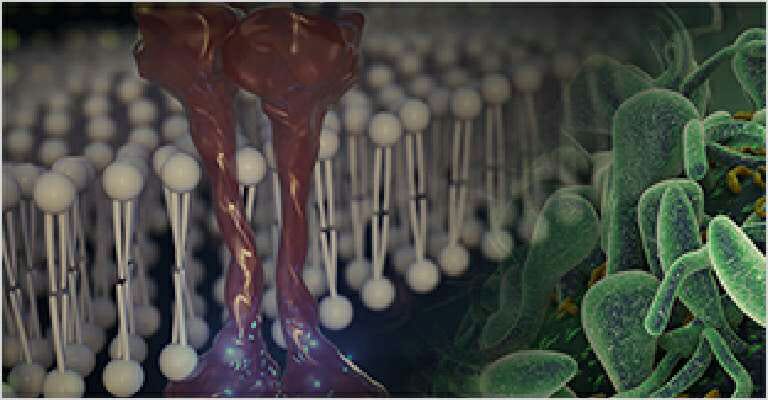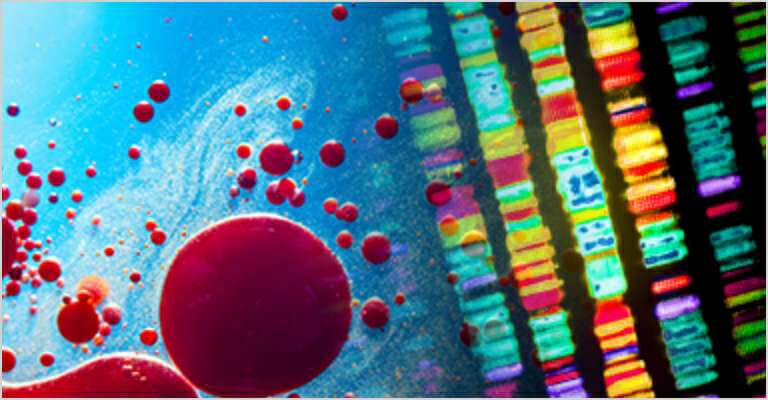
The latest research in infectious diseases
The Biodesign Institute is home to a wide variety of infectious disease experts who are actively working to understand better ways to treat and prevent infectious diseases, particularly those cased by viral and bacterial pathogens, which present a growing threat to human health worldwide.
Frequently asked questions
An infectious disease is an illness caused by a microbial germ, or microscopic organism. The four main sources of infections associated with infectious disease are bacteria, viruses, fungi and parasites.
An infection is when germs infest and multiply in the body. The immune system fights these germs and is sometimes able to cure the infection. However, if the immune system is weakened or is unfamiliar with the invading germs, it may not be as effective, and the body experiences disease caused by the germs as a result. Symptoms of infection vary widely between infectious diseases, but they can vary from fever and fatigue to organ failure.
Infectious diseases, also called communicable diseases, can spread between people, between animals, between animals and people (this is called a zoonotic disease), and between the environment and animals or people. Contagious diseases are ones that spread through direct contact with infected individuals or their secretions (such as saliva or mucus). Infectious diseases can also spread through indirect contact, like getting bitten by a mosquito that previously bit an infected person or touching a surface that an infected person touched. Some pathogens are spread through the air on particles or droplets in the breath.
There are many ways that germs can invade the body, including through contaminated food, water or medical devices; through wounds or bites; through sexual contact; and through the eyes, nose or mouth. Simple measures such as cooking food thoroughly, promptly cleaning and treating wounds, practicing safe sex, and washing hands frequently can help prevent infection. Masks and physical distancing can reduce the spread of many airborne pathogens, such as SARS-CoV-2. Getting vaccinated can also significantly decrease the chance of contracting an infectious disease.
Examples of infectious diseases still common in the U.S. are the various hepatitis viruses, influenza, Lyme disease, AIDS, COVID-19, shingles and syphilis. The world’s deadliest infectious diseases are either spread by mosquitoes, such as malaria, or are lower respiratory infections, which is a broad category that includes COVID-19, pneumonia and tuberculosis.
These terms are often confused. A virus is a type of germ that can invade the body and cause an infection. A disease is an illness — caused by the germ itself and/or the immune response to it — that happens after the body is infected. One way to think of it is like the difference between a pencil and a drawing. The pencil marks the paper, and the drawing is the result of those marks.
Efforts underway
Some of our scientists are discovering the structures of proteins that could become crucial targets for developing new antimicrobial drugs in the future. Others are using an understanding of cell evolution to keep us one step ahead of Mother Nature’s ability to craft dangerous germs. And more still are hard at work designing next-generation vaccines, including ones that come from carefully engineered plants. Together, these researchers will help us secure a safer, healthier tomorrow.
Please visit our COVID-19 impact page to learn more about how Biodesign has stepped up to battle this specific infectious disease.
Our experts are researching over 40 infectious diseases, including:
- Amyotrophic lateral sclerosis.
- Anthrax exposure.
- Antibiotic resistance.
- Burkholderia cepacia.
- Cholera.
- Food poisoning.
- Gastroenteritis.
- Infectious gastrointestinal disease.
- Legionnaires’ disease.
- Lyme disease.
- Methicillin-resistant S. aureus infection.
- Mycobacterium abscessus, avium, nontuberculous mycobacterial disease.
- Opportunistic waterborne infections.
- Pneumonia.
- Porphyromonas gingivalis/periodontitis.
- Pseudomonas aeruginosa.
- Tuberculosis.
- Tularemia.
- Typhoid fever.
- Whitmore’s disease.
- Valley fever.
- Pulmonary fibrosis.
- African trypanosomiasis.
- Chikungunya virus.
- COVID-19.
- Dengue virus.
- Ebola.
- Herpes.
- HIV/AIDS.
- Human papillomavirus.
- Influenza.
- Norovirus.
- MRSA.
- Polio.
- SARS.
- Smallpox.
- West Nile virus.
- Zika virus.
15.5 million
Number of visits to physician offices in the U.S. with infectious and parasitic diseases as the primary diagnosis.
27
bacterial infectious diseases studied by Biodesign researchers
Unlocking proteins to fight infectious diseases
The proteins on the outer layer of a cell — called a membrane — have key roles in the development of many infectious diseases. This is part of the reason why over 60% of pharmaceutical drugs target membrane proteins. In order to fill critical knowledge gaps about how these proteins work, Biodesign researchers are studying their structure and function. This could lead to new forms of treatment and prevention of infectious diseases.
Using the evolutionary process in our favor
Understanding evolutionary change in both cells and microbes can give us the tools to expand the potential of beneficial species of organisms and prevent adaptation in harmful species. Biodesign scientists who research cellular evolution apply their knowledge to pressing issues like evolutionary changes in disease-causing organisms and antibiotic resistance. Study of the evolutionary process can also bring insights into the complex battle between viruses and the human immune system. These insights can reveal new ways to give our immune systems an advantage against infections by microbes, as well as other diseases like cancer.
Finding new treatments and vaccines
In an era of outbreaks, epidemics and even the recent COVID-19 pandemic, Biodesign experts are engaged in critical research on how viruses and bacteria cause infectious disease, as well as how human and animal immune systems respond to these pathogens. They also use this knowledge to craft new solutions — for example, by using engineered bacteria and viruses to craft tailor-made vaccines, harnessing the immune system to treat a variety of illnesses, and bioengineering plants to create therapies and vaccines for diseases such as COVID-19 and Zika fever.
Latest news on infectious diseases
Related experts
Related centers

Virginia G. Piper Center for Personalized Diagnostics

Center for Mechanisms of Evolution
Center for Fundamental and Applied Microbiomics
Related facilities
Studying infectious diseases requires specialized equipment. These facilities support this work.
Advance our efforts
Support infectious disease research by making a donation.







